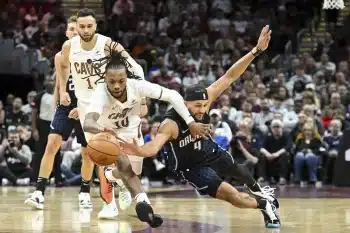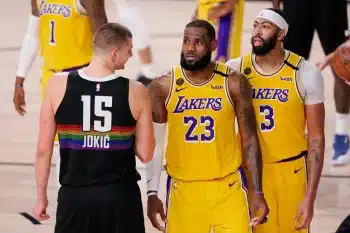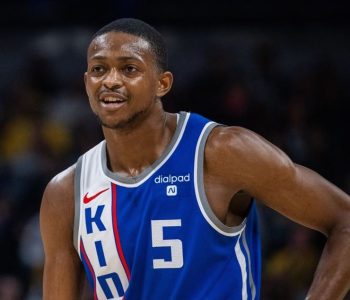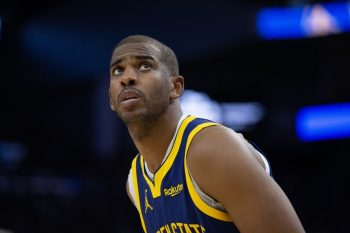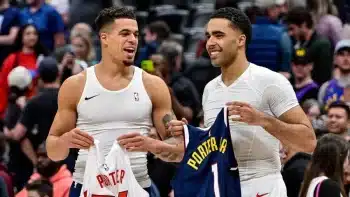NBA
NBA Sunday: Gauging Al Horford’s Value

Earlier this week, the NBA notified its franchises that it was expecting the salary cap for the 2016-17 season to fall somewhere in the realm of $92 million. That would represent a cap increase of $22 million from this season’s $70 million cap. That works out to a 31 percent increase, which is very good news for this summer’s crop of free agents.
By rule, the league’s teams are required to spend 90 percent of the salary cap on their payroll, meaning that each team will have to find a way to spend at least $83 million.
For Al Horford specifically, that may mean a payday in excess of $23 million in year one.
Does the prospect of paying Horford that kind of money frighten you?
If so, it shouldn’t, because the concepts of player value, worth and return on investment is undergoing a transformation in the NBA’s new economic era.
* * * * * *
Back in 2007, as the Florida Gators were attempting to make history by becoming the first Division I team to repeat as NCAA Champions since the Duke Blue Devils did so in 1992, Joakim Noah had become one of the most talked about players in the nation. Noah was a tireless worker and had earned the affection of even casual followers of the sport. Everyone knew that his future would be bright in the NBA, but as the Gators got closer and closer to the accomplishment they were chasing—one they would eventually achieve—Horford began to get notice and eventually supplanted Noah as the prospect that many believed would have the better NBA career.
The Atlanta Hawks obviously felt that way about Horford, evidenced by their selecting him with the third overall pick of the 2007 draft, ahead of both of his teammates Noah (selected ninth) and Corey Brewer (selected seventh).
Nine years later, Horford has clearly become the top prospect of that trio and is probably the third best player of the draft behind Kevin Durant and Marc Gasol.
Horford also happens to be earning just $12 million this season and is beginning yet another playoff run with the Hawks. Since his arrival, the Hawks have qualified for the postseason for nine consecutive seasons and have won five playoff series. Although Horford is a four-time All-Star, his career averages don’t necessarily scream “maximum salary,” as he has managed 15.4 points, 9.6 rebounds, three assists and 1.3 blocks per game on a career shooting average of 53.5 percent.
Still, what Horford has proven is that he can comfortably fit into the concept of a team, impact both ends of the floor and make a difference in the most important statistic: winning.
In a world where we have advanced statistics to prove to us whether players are or are not effective—in a world where Draymond Green is basically paid a maximum salary—one would be hard pressed to argue that Horford does not deserve similar consideration.
By virtue of completing his ninth season, Horford will be eligible for a maximum salary that begins at 30 percent of the salary cap. That works out to a first year salary of $27.6 million and means that a four-year maximum contract for the veteran player would cost some team in the neighborhood of $112 million. That type of payday seems to be steep for a player who hasn’t averaged as many as 20 points per game over the course of his career, but over the next two summers, as a whole, we will have to readjust our idea of what appropriate salaries are for players such as Horford, Pau Gasol, Dwyane Wade, Mike Conley and Harrison Barnes.
* * * * * *
Each summer, general managers are put in the predicament of having to determine what a player’s market value is and then account for the subjective or unquantifiable characteristics that may affect his value.
For example, Horford has played under head coach Mike Budenholzer for the past three seasons and is familiar with both the coach and the system he employs. Additionally, after having played in Atlanta for nine years, fans of the Hawks have probably developed a special affinity for Horford. In the NBA, these things have value and assigning a number to it is a difficult endeavor.
After signing a five-year, $60 million extension to remain with the Hawks back in 2011, Horford is closing in on his 30th birthday and will likely face his best and only opportunity to sign a big-money contract this offseason. With a majority of the NBA’s teams having significant salary cap space, there will be no shortage of suitors bidding for Horford’s services.
How much it ends up costing some team—whether it be the Hawks or another—is one of the more interesting story lines to follow this summer.
Aside from Horford, Nicolas Batum, Evan Turner and Kent Bazemore will face similar scenarios. None of those three are credited enough for what they contribute on the court. Batum has long been heralded as a brilliant all-around player who impacts every facet of the game and is happy with doing the dirty work. Turner has never lived up to the potential that he brought into the league with him after being selected with the second overall pick of the 2010 draft, but under Brad Stevens in Boston, he has turned into a dependable rotation player who has the propensity to hit big shots. Bazemore is enjoying a career-best season and has excelled as a full-time starter in Atlanta.
Batum is earning $13.1 million this year while Turner and Bazemore are earning just $3.4 million and $2 million, respectively. It wouldn’t be unheard of for Batum to command a salary in excess of $15 million. He only recently celebrated his 27th birthday and is a major part of the success that the Charlotte Hornets have experienced this past season. It shouldn’t come as much of a surprise for Turner and Bazemore to command north of $10 million either. The value of what they bring to a team must be reevaluated in light of the NBA’s new economic era.
For an above-average rotation player on a playoff contender, it’s a fine time to be alive.
* * * * * *
In the end, winning in the NBA requires many things: good fortune, brilliant coaching and astute management. Economically, success also requires a good return on investment, and that will remain the case so long as the league functions under an individual team salary cap. What makes things a bit more interesting, though, is the fact that the investment being made, by rule, must increase substantially. It follows then, that the market values that we have attributed to certain players and their contributions must increase substantially, as well.
In the end, that will make Al Horford a very rich man.
